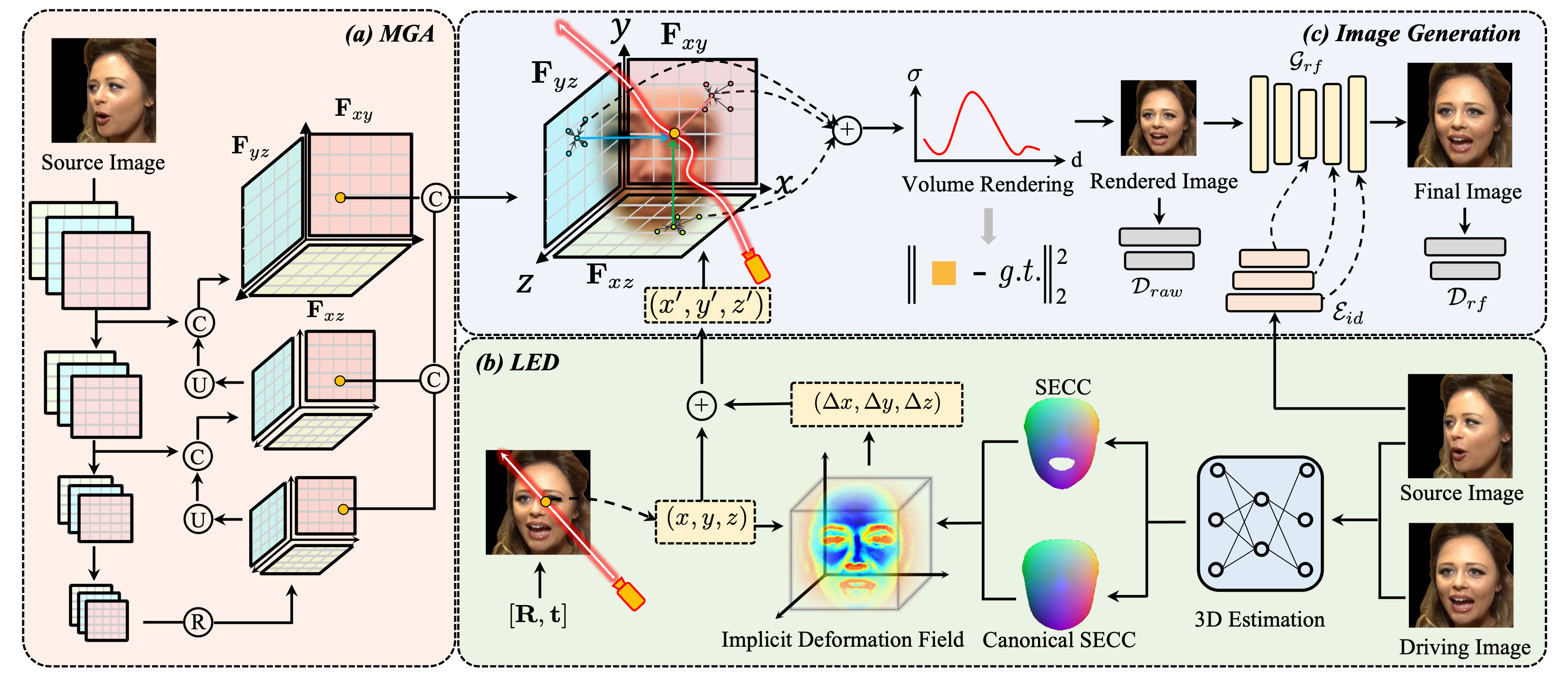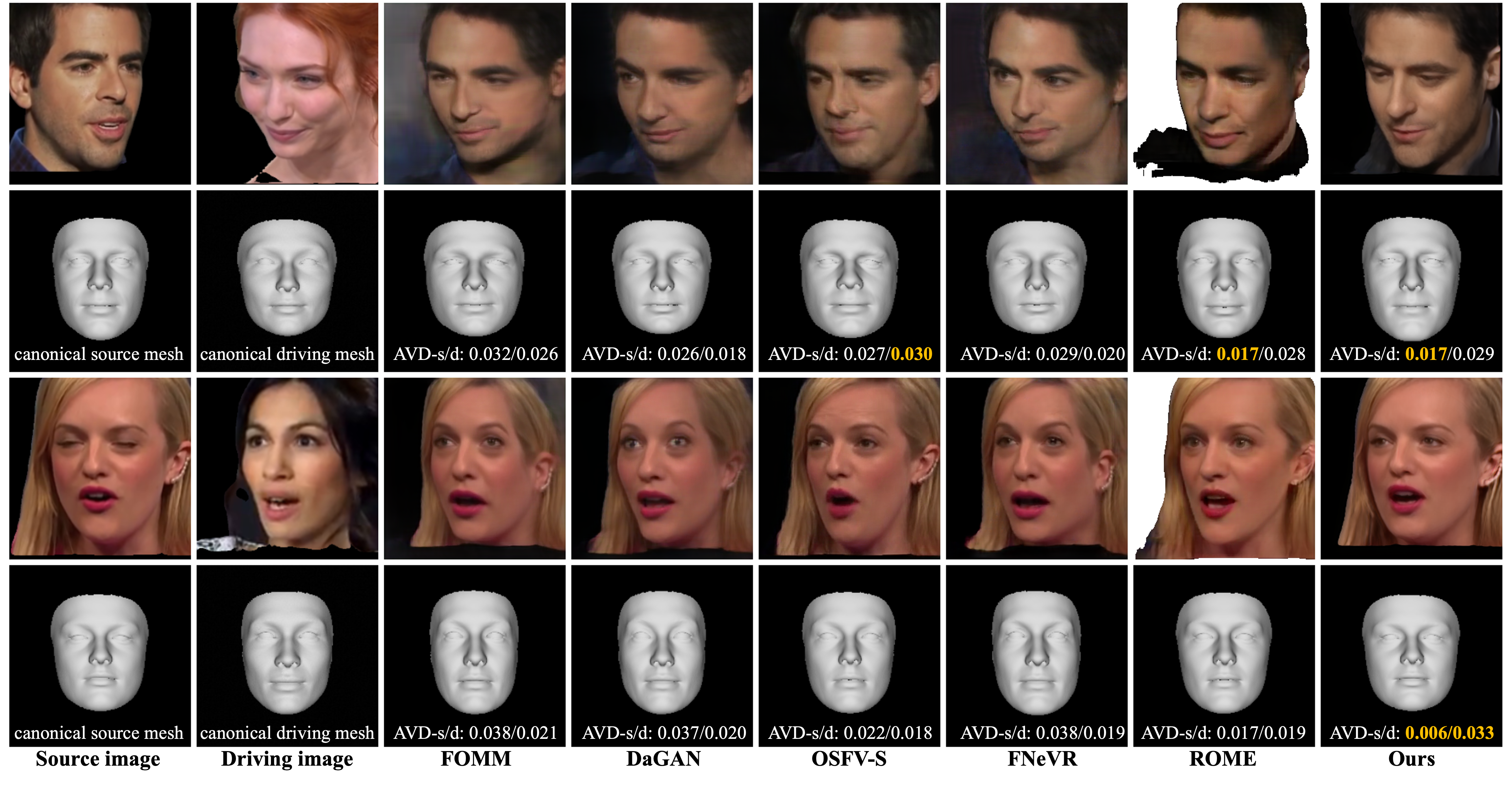Abstract

In this paper, we propose HiDe-NeRF, which achieves high-fidelity and free-view talking-head synthesis. Drawing on the recently proposed Deformable Neural Radiance Fields, HiDe-NeRF represents the 3D dynamic scene into a canonical appearance field and an implicit deformation field, where the former comprises the canonical source face and the latter models the driving pose and expression.
In particular, we improve the fidelity from two aspects:
- to enhance identity expressiveness, we design a generalized appearance module that leverages multi-scale volume features to preserve face shape and details;
- to improve expression preciseness, we propose a lightweight deformation module that explicitly decouples the pose and expression to enable precise expression modeling.

